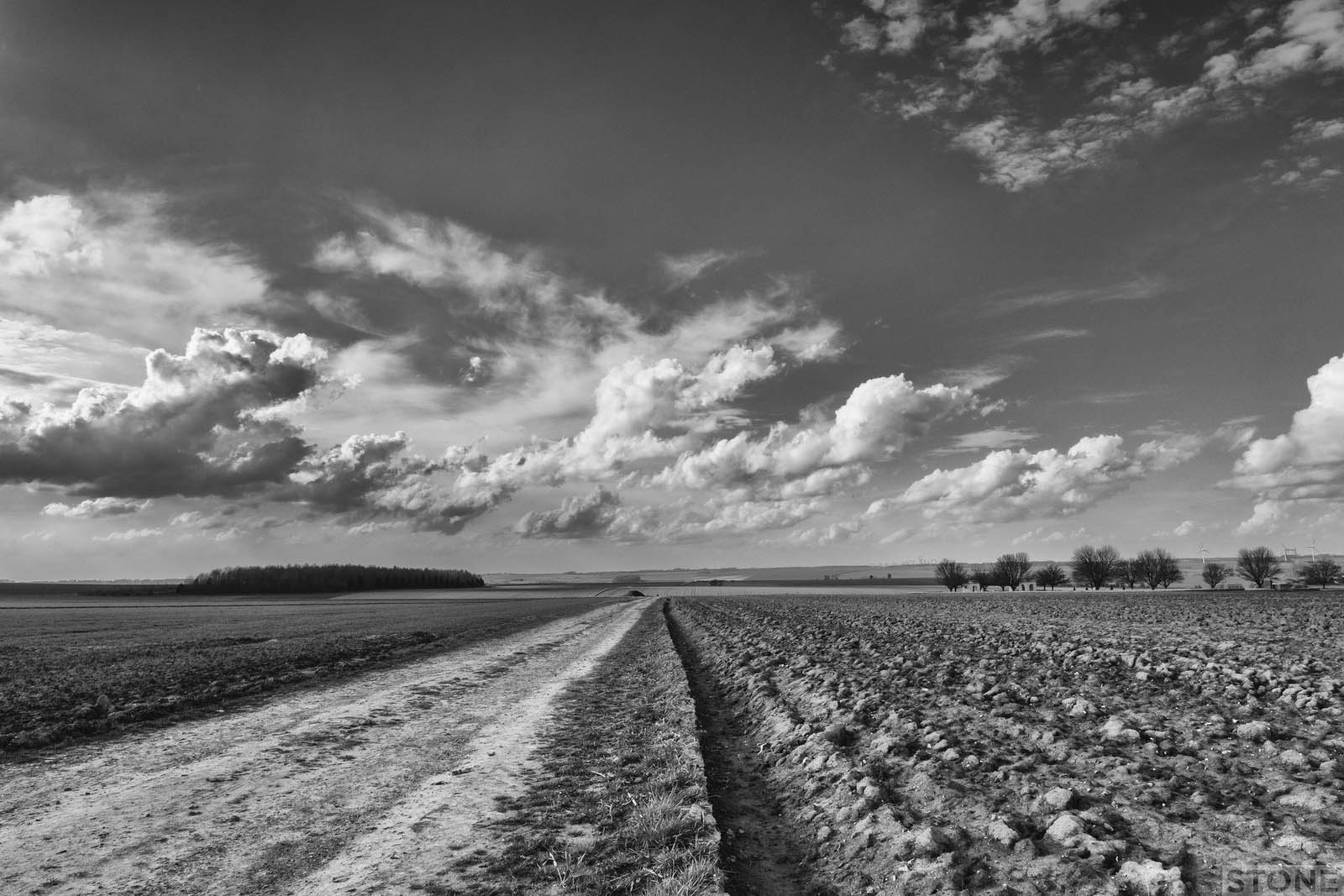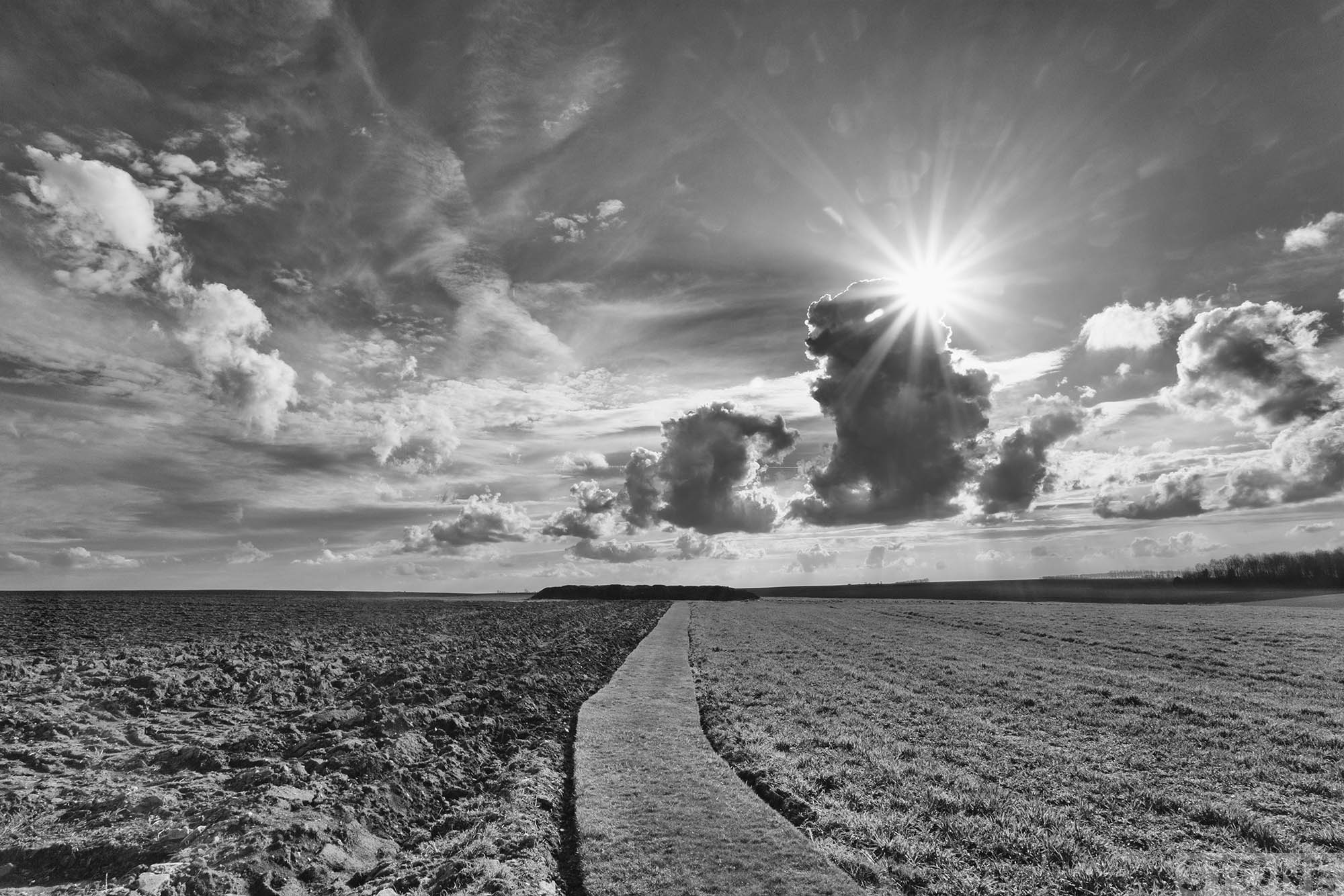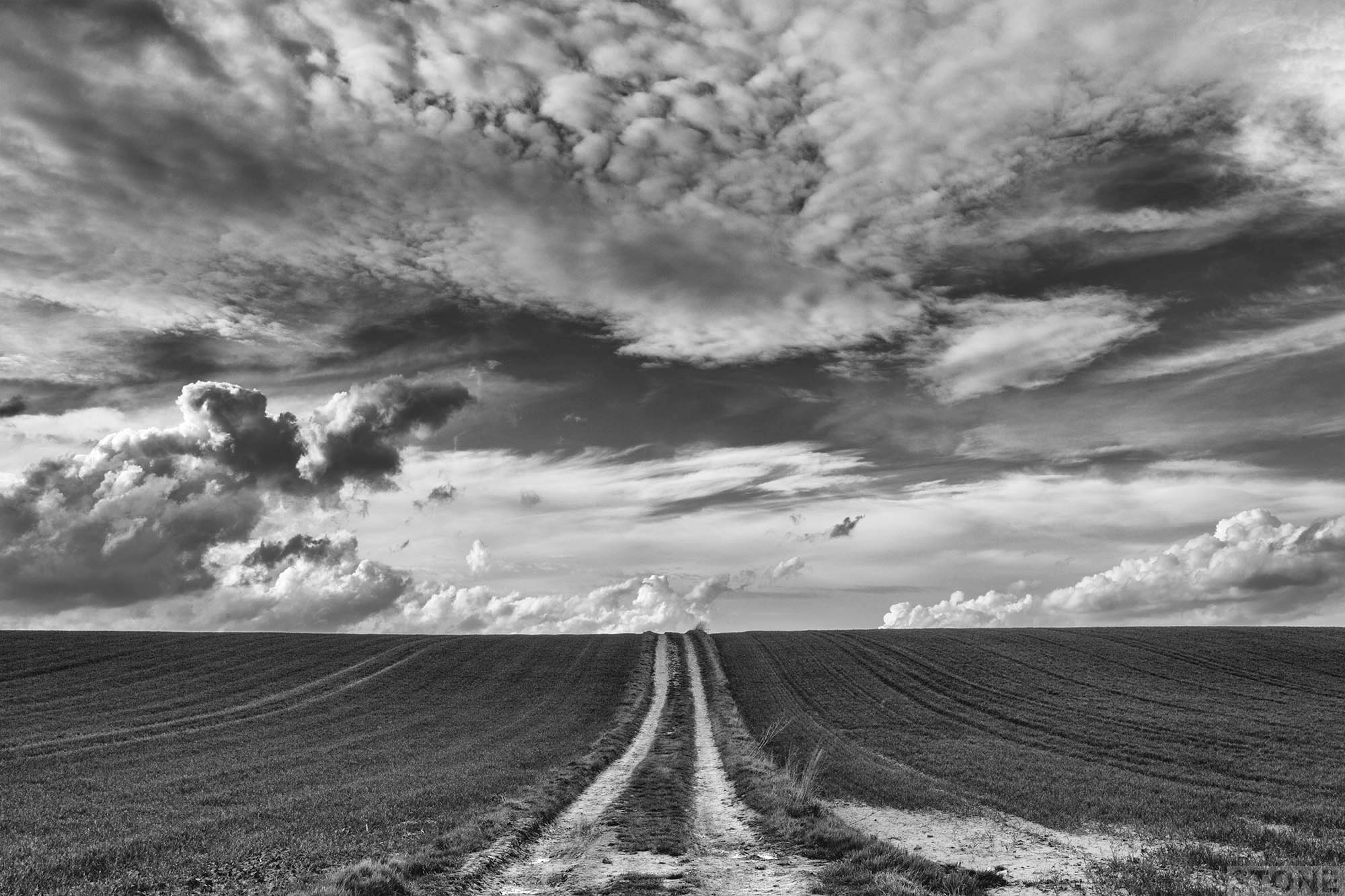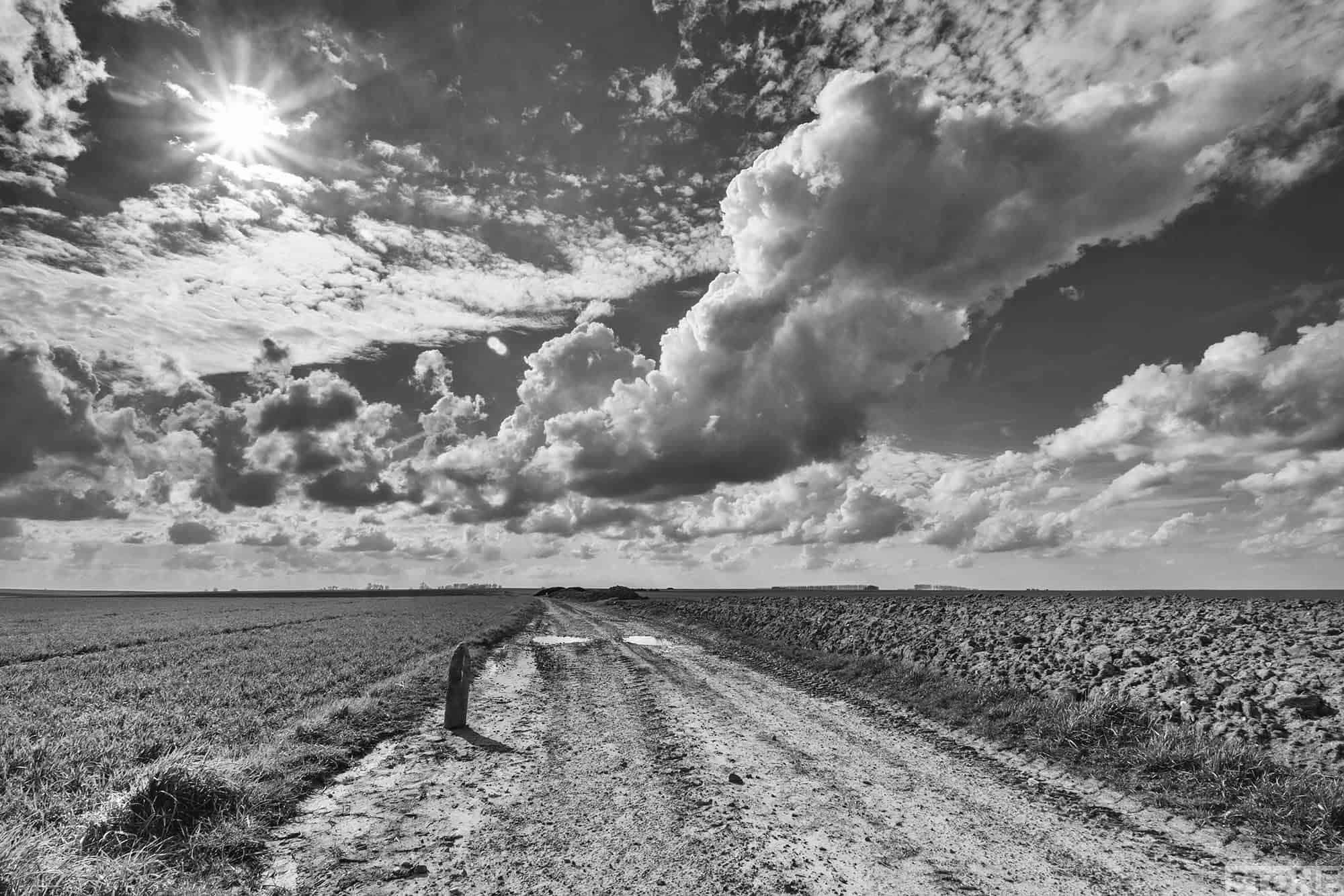I’ve been fortunate at times out on the front, walking the levelled trenches, across the flattened shell holes and in the regrown woods. You meet people, some you know via the curious enmeshed world of social media, shared interests in a shared space eventually made flesh out here in the dust and mud. This applies to both other people with a similar menu of interests to me; those who dip in and out, the obsessives, and the professional guides, consultants and general wanderers. On a dreary day in a windy cemetery on a ridge in the middle of nowhere it’s nice to bump into some familiarity in a landscape you can sometimes feel you almost inhabit on your own, the battlefields can be a dark part of the imagination fired by the facts and fictions of one hundred years.
I had an unfortunate moment on this trip. I’d planned areas to cover that I’d not had much luck with on previous visits. Serre in particular, the sky had gone out last time, a flat grey leaden ceiling low over everything, no texture, no shadow. The incoming drizzle in fading light had killed a days shooting more or less stone dead despite my insistence that there is always a photo in it somewhere even when the weather decides there isn’t. I would go back there, as well as covering Carnoy and the southern edge of the British front. Visit the regrowth at Trones and Bernafay Wood south of Longueval, Guillemont and up past Delville towards Martinpuich and Bazentin. Then the last day Grandcourt, Regina Trench and Courcelette. It’s a familiar litany of names, a hypnotic list that always reminds me of a weary old shipping forecast.
I walk a bit, drive a bit, then walk again carrying a clanking bag of tea, cameras, photocopies of trench maps, real maps, spare maps, other maps, and food. I did a fair bit of it, then the cloud came down hard and the light went. I got back in the car, pulled away, accelerated up a hill on a corner near the Bois Francais. The thought of a shower and fresh coffee in my head. Then the dashboard lit up and the hunk of metal went into limp mode and so did I. Twin system errors thrown up by modern life. I got back to the hotel, the car was dragged away by a French man on a flat back truck. Broken English and French, an unlit cigarette stabbed at various bits of the engine indicated it was not too bad but probably needed a part and that was that, he stuck the cigarette behind his ear and drove off. No car, I’m a catastrophiser so only the worst will do. I assumed I’d be stuck in the vicinity of the hotel for days, become euro-less and destitute, be dragged away to prison and eventually guillotined for crimes against the French language and baguettes.
Not so, obviously. The next day there came an invite from Paul Reed and his family to go and watch a drone filming for Above the battlefield, and then walk around Courcelette, interspersed with copious amounts of tea. A walk that turned out to be quite as strange and dreamlike as it was intense. Being shown something in detail is a real treat, being shown something by an expert is something else entirely. Courcelette is off the beaten track, not far off admittedly, nothing in the Somme battleground is very far from anything else, but it’s not part of the standard routes. The organised tours seem to tend to take a different track. This is pretty odd given its axial part in the later stages of the battle of the Somme. The sheer number of mainly Canadian, Australian and British men who hunkered down in the soft rolls of the landscape, lived here, slept, ate, fought and died trying to take the villages, forts and the line of trenches that ran across the land on the back edge of the ridges.
I’ve not been before but knew it on sight from Paul’s stunning photographs, pictures you know have been taken by someone who has a real feel for and understanding of where he is (you can find him and them on twitter here). The Reeds know it’s not frequently visited, they come here often, dally under the mature oaks, walk the coarse unmetalled roadways worn into the landscape by tractors, carts and foolhardy car drivers. The visitors book, so familiar at CWGC sites in Courcelette Cemetery and Regina can remain unchanged for weeks, sometimes months at a time.

It is dry, dusty on the tracks, the rain of the last 24 hours has already soaked into the chalky soil or been lifted back into the slanting cumulus by the intermittent heat of the spring sun, shrunken puddles mark the sumps and low points where tyres and feet have carved out ruts. The fields are historically large, it is not the micro-patchwork of Britain recently converted to industrialised farming, this is how it is, how it has been for centuries. A landscape interrupted only by the deep ploughing of shells, the fidget of bodies and slow clank and oiled breath of wagons and tanks. At the top of the ridges you can see for miles; Pozières is not far away, the telecom mast visible above the Windmill site and the Australian and Tank Memorial low against the straight incision of the Roman road between Bapaume and Albert. Further along the tracks, deeper into the fields between the newly sprung wheat and turned earth you come almost level with the back of Mouquet Farm and Thiepval. The modern context of the landscape, these slow steps on an ninety minute walk contrasted against the he gargantuan effort for huge numbers of men to move the same distances over weeks comes home to roost like black rooks on the stoney ground in your mind.
It is impossible not to study the soil. Again I find myself looking from the horizon back to the field margins. Between us we spot and variously point out remains in the crumbly till; there is the ever present shrapnel, bits like gravel right up to soup bowl sized chunks of dense crusted metal, pieces so large the curve of the surface is obvious. There are bits of shrapnel shells; strange disk-like cores with holes and tubes, thick early twentieth century glass, a bottle cap, bits of detonator tube, pieces of metal too thick to be farm scrap, we joke about tanks, there were tanks here, anything heavy and unidentifiable must be a piece of tank obviously. Poppy picks up a bullet head, a tracer, hands me a heavy brass fuse adapter, the centre crumbling away to grey powder, the ubiquitous ten-a-penny shrapnel balls. There are the bits we don’t touch; a fuse which looks like it may have failed, shells turned up by the plough, two lay on a grass bank, the cases cracked and corroded. Further on a huge German shell stands on the road, more than knee high and as thick as my thigh.
‘It might be gas, it might be High Explosive’ Paul says, A quick look at some German lettering on the fuse of the shell, no touching, we skirt the corroded mass, Traversing, sure as fate, and never a dud.
‘If it were HE and it went off how big would the blast be?’ I ask as we walk away.
‘We’d not be here’ he points at a distant pile of manure, ‘if someone were over there, the shrapnel alone would probably kill them’…
It’s sobering, a warm day, the larks are up, a fluting invisible trill in the blue and white, the only other sound is distant, the occasional drone of a distant car beetling between along the main road. These are no shells falling from the sky, fired from the ridge, we are not advancing across the fields from Pozières, yet it is still one hundred years on, a dull blunt threat in the landscape. Further on there is a post, another farmers dump, fragments of chopped up barbed wire, lumps of concrete, a few big native pieces of chalky flint and two shrapnel shells like huge shotgun cartridges empty after blasting their load of steel or lead balls forward, rammed full of earth on impact. Next to them another smaller unexploded HE shell and a stokes mortar, nestling between them a shattered Mills grenade the detonator intact, still live. These are a sample, a tiny cross-section of what is in the fields, millions of tons of ordinance lived over, on and around by farmers and residents day-in day-out. They don’t touch them. Something rustles coldly in my head. Three hundred and sixty people have been killed by ordinance like these around Ypres alone since The Great War, 500 injured. Builders, workmen, farmers, chancing across these dreadful things, like memories of a nightmare.
Regina Trench Cemetery lies towards the bottom of an incline along a thin but finely trimmed path. It sits on the line of the longest trench on the Somme stretching right back to Adanac cemetery in an area that was hard fought, particularly by the Canadians. They lay here, not just in the cemetery. There are an estimated six thousand men still in the sloping field above us and back toward Courcelette hidden behind the rise. Turned and turned again by shellfire, reburied and lost they still lie under the tracks, below the plough in the soil, feeding the roots of the oil-seed and the wheat.
We sit in the cemetery in the shade looking out towards where Grandcourt and Thiepval hide behind the low ridge. A trails bike jolts along a track behind us, throttling up, tearing along the rough path, kicking up a cloud of spring dust, it hangs and drifts lazily over the field. Paul mentioned how the position of Regina Trench on the back edge of the slope meant anyone coming over the rise was skylined. Turning to watch the motorbike rider, obviously oblivious to us tear along the track on the horizon is proof enough, nobody stood a chance yet somehow they did it. In September they took this line, we’re sitting with them lost in the wavelengths of earth and rhythm of the land.

We head down to one last place, it had been some kind of post; an O.P or a store, near where the French military now sometimes come and bury and then blow up the ordinance that we’ve seen on the edges of the paths. It’s all quite hidden in a dip along an overhanging field boundary, from a landscape archaeology point of view in a conflict it screams shelter. It is however muddy, water collecting in a hollow, with relative safety would come discomfort. There again the thick broken shards of glass the Archaeology of rest and recuperation visible in the topsoil. Here are the remains of the post war clearances too; at the end when everyone had packed up the useful stuff and gone home and as the land started to heal, scrap was dumped in shell-holes, the earth bulldozed and shovelled back in to give the local population a fresh canvas to paint normal life back onto. Sometimes these are uncovered, there is one here. Junk treasure; petrol cans and lids, bits of wire and bent metal, a German water bottle holed and twisted but still flecked with paint, metal angles from boxes and bits of an ammunition crate, lengths of rotten dowel that could be handles from something, a scatter of black diamonds the remains of rotting German cordite. It is like a memory scuffed back up to the surface, some fish caught from depth, distorted by the pressure of the change, disintegrating slowly and gracelessly on the side of the track, washed up, we crouch, pick through the twisted shapes and point and um and arr, then leave it there to rust.

Many a frosty night, and merrily
Answered staid drinkers, good bedmen, and all bores:
‘At Mrs Greenland’s Hawthorn Bush,’ said he,
‘I slept.’ None knew which bush. Above the town,
Beyond ‘The Drover’, a hundred spot the down
In Wiltshire. And where now at last he sleeps
More sound in France—that, too, he secret keeps.
– Edward Thomas


Thank for the walk where many fell. My Grandfather William Clark Stewart now lays at rest in the grave at Courcelette, may they all rest in peace.
Many thanks for the great writing. Made me feel as though I were there